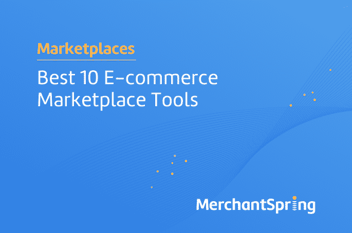Marketplace Metrics To Track Across Your Platforms
All professional sellers know that in order to be successful on online marketplaces, they have to keep an eye on their Critical Success Factors (CSFs), such as keeping a high volume of impressions, maintaining a good sales performance and controlling costs.
Analysing CSFs and their metrics regularly and effectively becomes more and more difficult as sellers expand to sell internationally on eBay, Amazon or other marketplaces. All of the online marketplace metrics become decentralised, as they’re distributed across different pages and logins, making analysis a burden that robs them of essential time.
A marketplace metrics dashboard that centralises multiple platforms is “the” tool that professional sellers need to optimise time and make better decisions. But what metrics should this dashboard give you? Let’s look at the most important ones.
Impressions
If sales are slow or if you want a sales boost, the first step is to look at the number of impressions and click through rate. What do they look like? Are they decreasing, stagnant?
Because of eBay’s and Amazon’s sophisticated search engine algorithms, the volume of impressions and the click through rate are direct reflections of a number of important variables:
- the quality of your listing
- content completion
- sales history, sales conversion rate
- customer reviews
- quality of customer support, returns, product defect rate, shipping speed, etc
- stock status
- seller health
When a seller’s performance in these variables and metrics are below standard or below the competition, their ranking on the marketplace’s internal search engine suffers.
Consequently, their impressions and CTR are lower, turning off a vital stream of organic traffic to their product pages. You can imagine what comes next: fewer sales and at a higher cost of acquisition.
Sales Performance
Another critical factor you should monitor closely is sales performance. This is an umbrella term which indicates not just how much you sell, but how happy your customers are. Meaning:
- Sales conversion rate, unit session percentage (Amazon)
- Seller rating
- Defect rate
- Return rate
- Pre-fulfillment cancel rate
- Late shipment rate (Amazon), tracking uploaded on time (eBay)
- Cases closed without seller resolution (eBay)
On Amazon and eBay, the benefits of a good sales performance compound over time. Both marketplaces raise the search ranking of listings with a high level of customer satisfaction and sales, which leads to:
Good sales performance › higher rank in organic results › more impressions › more sales › higher conversion rate › better sales performance
Specifically on Amazon, a good sales performance results in winning a bigger share of the Buy Box. Buy Box eligibility is determined through a variety of sales performance metrics, of which Order defect rate (ODR) is the most important. Monitoring your sales performance and, specifically, keeping a high seller rating is the only way to ensure you win the Buy Box and succeed on Amazon.
Total Cost & Profitability
Total cost and profitability are two sides of the same coin: pricing. On the one hand, your price has to cover landed costs and, on the other hand, it has to deliver a sustainable profit.
Your price point can be the difference between succeeding and failing. For this reason, hitting the right price point is one of the hardest things to do, particularly when selling on global marketplaces and in different platforms.
But only sellers with controlled costs can afford to explore and find the price point that will deliver the best ratio of sales and profit. So if you’re a seller who can’t afford to do things like match your competitor’s prices or even lower prices to attract new customers, consider the following tips for reducing costs:
- Are all of your international marketplaces profitable or is there a money pit?
- Are all e-commerce platforms you’re on worth the effort?
- Are you paying to publish listings that don’t generate any revenue?
- Can you switch to a cheaper supplier?
- Are you running PPC on listings that are under-performing?
- Can you move to the eBay Global Shipping Program or to Fulfilment by Amazon?
Conclusion
As you can see, there are many factors to consider when you sell on an online marketplace like eBay and Amazon. It gets even tougher when you sell on many platforms, or in many countries. But help is at hand.
The MerchantSpring Marketplace Manager tool is any professional seller’s right-hand man: it tracks and combines important metrics and factors across every top marketplace and country into one single user interface. Including: sales across all stores, top performing products by country, by store and by category, listing quality, seller account health, inventory and orders, insights and actions to optimise your performance.
Every marketplace has different metrics, presented in different ways, but MerchantSpring simplifies the data and delivers important insights that can’t be found within the platforms.
MerchantSpring even offers a FREE Marketplace Performance Check up! Book in for a call with one of our marketplace experts today.
Stop wasting time on endless spreadsheets and manually comparing markets, countries, stores and platforms. Sign up for a Free MerchantSpring account today









Add a Comment